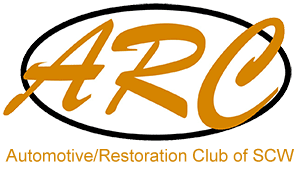First things First, ” the tear down” take lots of pictures and I mean lots of them. Knowing the order that you disassembled your project is going to be very important 6 months or two years from now. You mite try grouping things together like door parts, interior, engine compartment, wiring, glass, moldings, etc. Labeling items is a good idea to, many times I have looked at a part a few months after starting a project and said to my self “what the blazes is this for”. So any way think ahead, you will save your self a lot of aggravation. I don’t know about you I am always miss placing tools even while working on a project. Oops that screw driver that I’ve been looking for, it’s in my back pocket!
OK well lets get started, if your planning a complete restoration and want it done right then plan ahead and make notes. Who do I call for parts, needed tools, primers, paints, gaskets, bolts, welding supplies, sand blasting, etc. Working these things into your budget and shipping time plus when do you really need the stuff they all factor in.
Lets start with sandblasting, it will reveal rust that you mite not even think is there. Pin holes lurking just below the paint surface, when disturbed by sanding will certainly come through within a few months after refinishing. Sand blasting before you begin your restoration will let you know exactly where repairs are needed it maybe just patching or you find that an entire panel needs replacing. I have been doing this since I was 17 and now at 63 even I have been surprised. Wait for the least humid day and get it primed right away with a self etching two part primer or powder coating. When having a cab or body done look for the areas where the manufacture has used a body seam sealer, the cowling, drip rails, etc. Use a screw driver to chisel it off, there will at least be surface rust beneath. I recommend after priming you use 3M or equivalent “Seam Sealer” to redo those areas. Most likely when the parts come back from sand blasting they will need to be sanded with 80 grit to prepare them for priming.
Rust patching and partial panel replacement, now her is where the fun begins. I am a little old school when it comes to rust repairs I still prefer Brazing for patching and copper coated steel for floor areas. If you adjust the flame until it splits 3 ways that is the Sweet Spot for lowest temperature to melt 3/32 brass rod and have it flow nicely with very little expansion of the metal. I usually concentrate the heat on the rod and touch it to the metal at the last second to get a nice flow. I do not recommend flux coated rods they are messy, buy a can of the Blue powder flux and punch a small hole in the top cover about I/8 inch will work. In the case of replacing a cab corner fit the door jamb first then push the metal around the corner to the back spot welding about every inch or so. Now this is the tricky part across the back spot weld about every 4 inches on your first pass then back and every 2 inches then back to every 1 inch. Now if you did this correctly the metal had time enough to cool and should be no warping. When things have cooled off weld it solid and move as quickly as you can. The reason I use copper coated steel on floor areas, you don’t need to worry so much about things warping and the copper coating makes for a nice strong weld. For those who prefer wire feed .030 and a low temp setting will work. Notice that I outlined the original replacement panel on the cab back with a Sharpie below. This was to see weather or not I could stay out of the indented areas, It was ok here to cut it 1/2 inch below this makes for a small amount of plastic work after grinding . Go ahead and click on the illustration for a better view.





